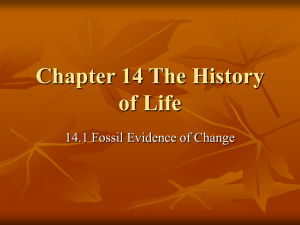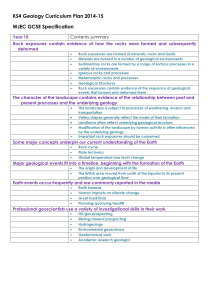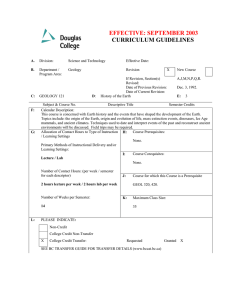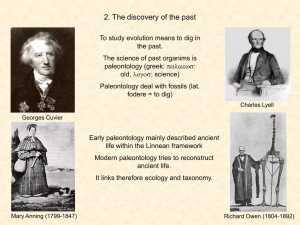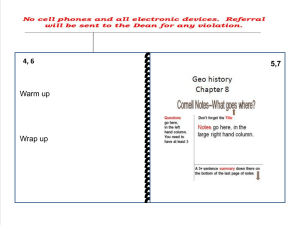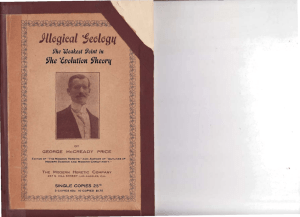Geological Time
advertisement
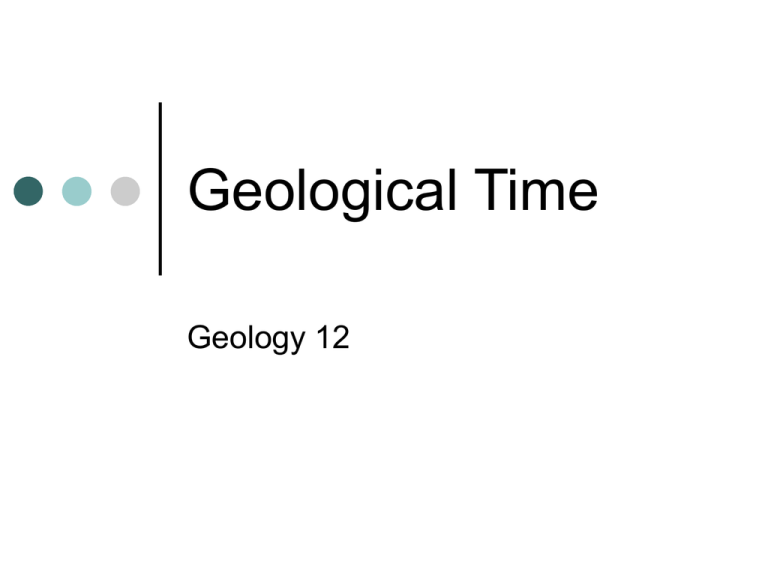
Geological Time Geology 12 Uniformitarianism “The present is the key to the past”- the fundamental principle that underlies most of geology. Put simply, it explains that the present processes occurring on earth have occurred throughout geological time. Relative time ("chronostratic") -- subdivisions of the Earth's geology in a specific order based upon relative age relationships (most commonly, vertical/stratigraphic position). These subdivisions are given names, most of which can be recognized globally, usually on the basis of fossils. Relative Dating: Determining the chronological sequence of rock units by using six fundamental principles of geology. It estimates the order of prehistoric and geological events determined by using basic stratigraphic rules, and by observing where fossil organisms lay in the geological record, often in horizontal, stratified bands of rocks present throughout the world. Relative dating can determine the sequential order in which a series of events occurred, but not precisely when they occur. 6 laws/ principles used to determine the relative age of rocks 1. Principle of Superposition -In an undeformed sequence of sedimentary rocks, the youngest beds are at the top and the oldest beds are at the bottom (also applies to volcanic rocks). 2. Principle of Original Horizontality - The observation that sediment particles deposited from water under the influence of gravity form essentially horizontal layers. Non-horizontal rocks have been disturbed after deposition and lithification. 3. Principle of Lateral Continuity - Sediment extends laterally in all directions until it thins, pinches out, or terminates against the edge of the depositional basin. 4. Law of Cross-Cutting Relationships An intrusion or fault that cuts through another rock is younger than the rock it cuts. 5. Principle of Inclusion - Inclusions are older than the rock that contains them. 6. Principle of Faunal Succession - Fossil organisms succeed one another in a definite and determinable order, so any time period can be recognized by its fossil content. General evolution pattern is from simple to complex organisms. 4 Types of FOSSILS: Actual unchanged remains Remains replaced by minerals Molds and casts Impressions (i.e tracks, footprints) In order to be considered an “Index Fossil” the organism must: A) be found over a wide geographic area B) have only existed for a relatively short time span (and therefore found in only a few distinct rock layers) C) be easy to distinguish from other similar fossils Absolute time ("chronometric") -numerical ages often in "millions of years”; most commonly obtained via radiometric or isotope dating methods performed on appropriate rock types. Absolute Dating: A general term applied to a range of techniques that provide estimates of the age of objects or materials in real calendar years either directly or through a process of calibration with material of known age. Such techniques include radiocarbon and radiometric dating.


